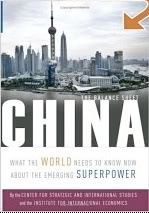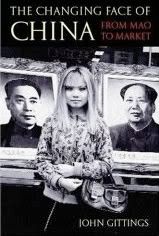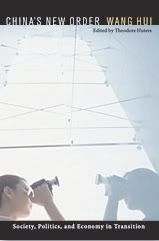Dispatch From China
Jen Lin-Liu
Beijing
The pedicab driver stretched out in the passenger seat, his legs thrown over the bicycle seat, half dozing and half listening to the latest news updates in the hours after America began its missile strikes against Iraq. This image stuck in my mind while I walked through Beijing's streets, because it seemed to illustrate China's passive yet paradoxically vigilant attitude toward the unfolding war.
Given China's censored media, citizens have generally suffered from a lack of information. But not during this war. Radio talk shows discuss America's possible military strategies. Mobile phone users are receiving news about the war via text messages. Passengers watch the latest war updates on flat-screen televisions on Shanghai's public buses. State-controlled television news, which has been running twenty-four-hour coverage, updates viewers so frequently that at least a few times anchors have had to apologize for misreporting. On the first day of battle, a couple of gaffes included reporting that Saddam Hussein's son had been killed and that the United States had taken over certain Iraqi television stations. The rabid coverage could be explained by China's progress toward relaxed censorship rules--but it also indicates its disapproval of the war. And if China is officially taking a more muted stance (it condemns the US action but did not threaten to veto the UN resolution), the country can at least take an active role in monitoring the unfolding events.
The words "Iraq" and "America" have been passing through their lips in recent weeks, but many Chinese don't seem to have a specific opinion on the matter--until you listen closely to what they're saying. "We don't care about so many things. After living through the Cultural Revolution, we've learned not to interfere," one middle-aged tea vendor said. Then he continued: "We're not going to interfere in the matter, just as America shouldn't be interfering in other countries' business." Indeed, he has made his point, albeit in the least confrontational way possible. Others were more blunt. "America is too hegemonic," one cab driver said. "They're trying to be the world's policeman. I think a country should take care of their own affairs before managing others'."
Of course, one reason the Chinese haven't been more vociferous is because of the country's ban against protests--the government has had to balance its disapproval of the US-led war with attempts to cultivate its growing economic ties with America. Beijing students who requested permission to stage an antiwar rally were reportedly turned down. A group of academics staged a small antiwar effort when they presented a letter to the US Embassy in Beijing that stated, "The Bush Administration has failed to offer a clear casus belli, while offering on different occasions varying reasons for going to war, none of which stand up to close examination." The ever-capitalist Shanghai protested in true consumer style: A couple of hundred residents, a combination of foreigners and locals, showed up at the city's busiest market wearing red one Sunday in late February to protest the war effort. "Because of the moral vacuum that exists in China, we tried to make things as nonconfrontational as possible," says one organizer of the offbeat demonstration. "It was a very empowering experience."***
Jen Lin-Liu is an American journalist based in China who writes for The Chronicle of Higher Education and Newsweek International.
Link
Read more!



